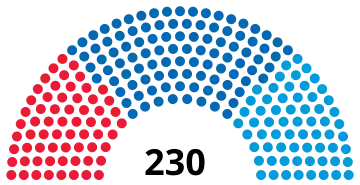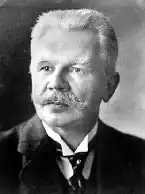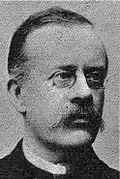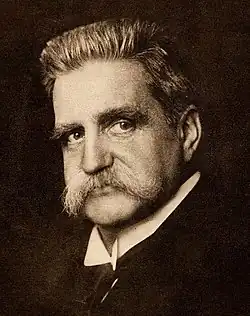1911 Swedish general election
| |||||||||||||||||||||||||||||
All 230 seats in the Andra kammaren | |||||||||||||||||||||||||||||
|---|---|---|---|---|---|---|---|---|---|---|---|---|---|---|---|---|---|---|---|---|---|---|---|---|---|---|---|---|---|
| |||||||||||||||||||||||||||||
| |||||||||||||||||||||||||||||
.svg.png) |
|---|
General elections were held in Sweden between 3 and 24 September 1911,[1] the first election in Sweden with universal male suffrage.[2] The Free-minded National Association (FL) emerged as the largest party, winning 102 of the 230 seats in the Andra kammaren of the Riksdag.[3]
As a result of the election, the General Electoral League's Arvid Lindman resigned as Prime Minister and was replaced by FL leader Karl Staaff.
Results
 | |||||
|---|---|---|---|---|---|
| Party | Votes | % | Seats | +/– | |
| Free-minded National Association | 242,795 | 40.20 | 102 | –3 | |
| General Electoral League | 188,691 | 31.24 | 64 | –27 | |
| Swedish Social Democratic Party | 172,196 | 28.51 | 64 | +30 | |
| Other parties | 292 | 0.05 | 0 | New | |
| Total | 603,974 | 100.00 | 230 | 0 | |
| Valid votes | 603,974 | 99.42 | |||
| Invalid/blank votes | 3,506 | 0.58 | |||
| Total votes | 607,480 | 100.00 | |||
| Registered voters/turnout | 1,066,200 | 56.98 | |||
| Source: Nohlen & Stöver | |||||
References
- ^ Dieter Nohlen & Philip Stöver (2010) Elections in Europe: A data handbook, p1858 ISBN 978-3-8329-5609-7
- ^ Edebalk, Per Gunnar (2000). "Emergence of a Welfare State – Social Insurance in Sweden in the 1910s". Journal of Social Policy. 29 (4): 537–551. doi:10.1017/S0047279400006085.
- ^ Nohlen & Stöver, p1871


